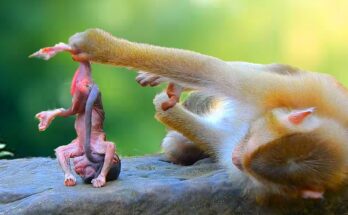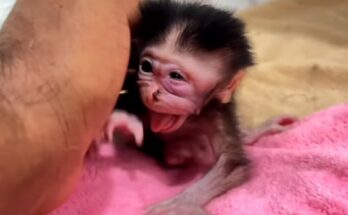In some remote villages across parts of Africa and Southeast Asia, traditional bushmeat dishes remain a deep-rooted part of local culture. One of the more unusual and controversial delicacies is roast monkey meat, prepared over an open fire for a special barbecue. While it may seem shocking to outsiders, for some communities, monkey meat is a source of nourishment and tradition passed down through generations.
The process begins with careful preparation. After a successful hunt, the monkey is brought back to the village and cleaned thoroughly. Its fur is singed off over a blazing fire, giving off a strong smoky scent. Then the meat is cut into pieces, seasoned with salt, herbs, and sometimes chili or local spices for flavor. The meat is skewered or placed on a handmade grill crafted from wooden sticks.
As it roasts, the monkey meat begins to brown and sizzle, releasing a rich, gamey aroma that fills the air. Villagers gather around the fire, chatting and laughing, while the meat cooks slowly over the coals. The crispy outer layer forms as the inside remains juicy and tender. This slow-roasting method helps preserve the meat’s natural flavors.
Once cooked, the monkey meat is served with traditional sides like cassava, roasted maize, or wild fruits. It’s often eaten with bare hands, shared among family and friends. Though the taste is strong and different from farmed meats, locals describe it as hearty and satisfying.
While this practice is deeply embedded in some cultures, it’s also the subject of ethical and conservation concerns in modern times. Still, for many rural communities, roast monkey meat remains a symbol of survival, heritage, and communal life. It’s a rare and powerful reminder of how food can reflect history, resourcefulness, and identity.


